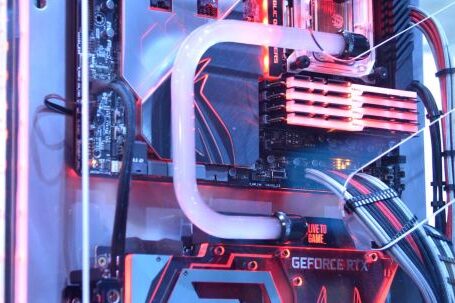In the ever-evolving world of streaming devices, two popular options that often come up in conversations are Chromecast and Roku. Both devices offer a wide range of streaming options, but they do have some key differences. So, let’s dive into the details and compare the two.
Setup and Ease of Use
When it comes to setup, Chromecast takes the lead with its simplicity. All you need to do is plug the device into your TV’s HDMI port and connect it to your Wi-Fi network. The setup process is quick and straightforward, making it an excellent choice for users who want a hassle-free experience.
On the other hand, Roku offers a more traditional setup process. You need to connect the device to your TV, go through the initial setup on the device itself, and then connect it to your Wi-Fi network. While the process is still relatively easy, it does require a bit more time and effort compared to Chromecast.
Content Selection
When it comes to content selection, both Chromecast and Roku offer a vast array of streaming options. However, there are some differences in the availability of specific apps and services.
Chromecast relies heavily on your smartphone or tablet to stream content. It acts as a bridge between your device and your TV, allowing you to cast content from supported apps. This means that you can stream content from popular services like Netflix, YouTube, and Spotify, as long as they have Chromecast support.
Roku, on the other hand, has its own operating system and app store. It comes with a wide range of pre-installed apps, including popular services like Netflix, Hulu, and Amazon Prime Video. Additionally, Roku offers access to the Roku Channel, which provides free, ad-supported content.
Remote Control
One of the most significant differences between Chromecast and Roku is the way you control the devices. Chromecast relies entirely on your smartphone or tablet for navigation and control. You use your device as a remote control, selecting content and controlling playback through supported apps.
On the other hand, Roku comes with a physical remote control that offers a more traditional TV-watching experience. The remote allows you to navigate through the Roku interface, search for content, and control playback. Some Roku models even come with voice control capabilities, making it even more convenient to use.
Price and Device Options
When it comes to price, both Chromecast and Roku offer affordable options. Chromecast starts at around $35, making it a budget-friendly choice. Roku devices range in price, with options starting as low as $29.99 and going up to around $99.99 for more advanced models.
In terms of device options, Chromecast offers a single physical device that you can connect to your TV. However, there are different generations of Chromecast available, with the latest version offering 4K streaming capabilities.
Roku, on the other hand, offers a range of devices with different features and capabilities. From the Roku Express to the Roku Ultra, there is a device to fit every budget and streaming need.
Conclusion
In conclusion, both Chromecast and Roku offer excellent streaming options, but they have their own unique features and differences. Chromecast provides a simple and easy-to-use setup process, relying on your smartphone or tablet for control. On the other hand, Roku offers a more traditional TV-watching experience with its physical remote control and wide range of pre-installed apps.
Ultimately, the choice between Chromecast and Roku depends on your personal preferences and needs. If you prefer a straightforward setup and don’t mind using your smartphone as a remote, Chromecast may be the right choice for you. On the other hand, if you prefer a more traditional TV experience and want access to a wide range of apps, Roku may be the better option.




